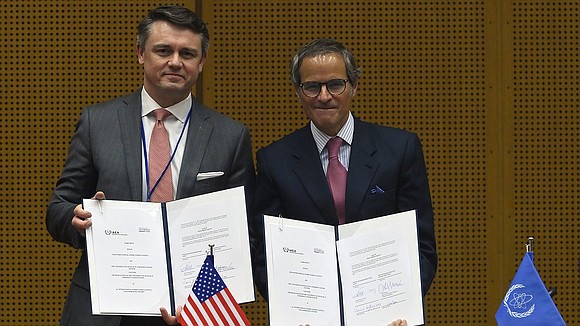MD Anderson designated IAEA Collaborating Centre to focus on improving radiation
MD Anderson is first U.S. health care institution to receive distinction
Style Magazine Newswire | 1/30/2024, 12:54 p.m.

The University of Texas MD Anderson Cancer Center has forged a groundbreaking collaboration with the International Atomic Energy Agency (IAEA) by becoming an IAEA Collaborating Centre. This partnership aims to elevate global efforts in radiation oncology, radiation physics, radiology, nuclear medicine, and nutrition. MD Anderson, renowned for operating the world's most comprehensive radiation oncology facility, will be the first U.S.-based IAEA Collaborating Centre with a focus on healthcare.
Peter WT Pisters, M.D., President of MD Anderson, expressed the institution's dedication to advancing global cancer research, treatment, and education. He stated, "Our collaboration with the IAEA and our designation as a Collaborating Centre exemplify our commitment to accelerating progress, particularly in low- and middle-income countries where access to radiation treatment and diagnostic imaging is limited."
The IAEA, with over six decades of experience combating cancer globally, collaborates with the World Health Organization (WHO) and other United Nations agencies.
An IAEA Collaborating Centre is an institution designated by the IAEA to support its programmatic activities, focusing on research, development, and training. As of January 2024, there are 71 active IAEA Collaborating Centres worldwide operating in various areas related to the safe application of nuclear science and technology.
IAEA Director General Rafael Mariano Grossi, at the signing ceremony in Vienna on January 30, 2024, emphasized the significance of MD Anderson's commitment to advancing cancer patient care, research, education, and prevention. The collaboration will support cancer care globally through training and educational activities in low- and middle-income countries under the IAEA's Rays of Hope initiative.
MD Anderson's designation as an IAEA Collaborating Centre follows years of collaboration. The Imaging and Radiation Oncology Core (IROC) Houston in the Department of Radiation Physics at MD Anderson has provided quality assurance services to IAEA Member States globally. MD Anderson experts have contributed to numerous IAEA publications, including the Radiation Oncology Physics: A Handbook for Teachers and Students.
The collaboration will involve MD Anderson's support for IAEA through a jointly developed work plan, including:
Training and Educational Activities: Focused on radiation oncology, radiation physics, radiology, nuclear medicine, and nutrition.
Technical Expertise and Assistance: To expand scientific and technical capabilities in radiotherapy and radiology.
Research Collaborations: Including quality assurance of dosimetry auditing methodologies.
Collaboration in the Rays of Hope Initiative: Participating through Anchor Centres.
Participation in the Cost-Free Experts Program: Providing technical experts.
Kathleen Schmeler, M.D., Associate Vice President of Global Oncology at MD Anderson, expressed gratitude for the designation as an IAEA Collaborating Centre. She highlighted the institution's commitment to advancing global initiatives in cancer research and treatment. This collaboration aligns with MD Anderson's Strategic Plan to reach more people and save more lives, contributing to its international collaboration to reduce the global burden of women's cancers with the WHO.
As the world observes World Cancer Day on February 4, MD Anderson's efforts resonate with the broader mission of raising awareness and addressing global cancer care disparities. The collaboration with the IAEA marks a significant stride toward achieving these goals on a global scale.







